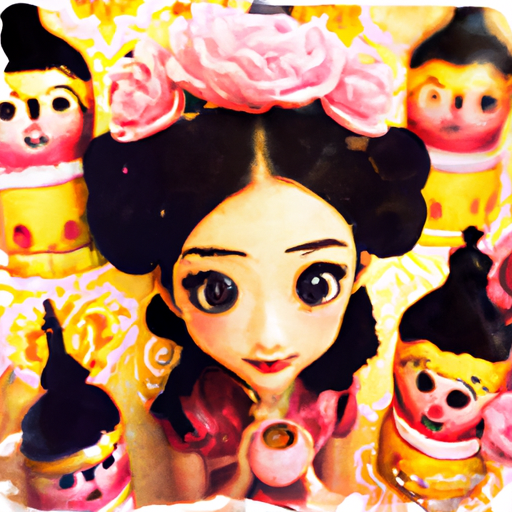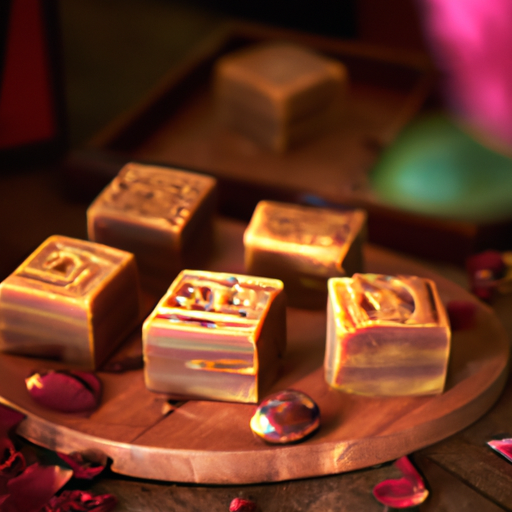
The Mid-Autumn Festival, also known as the Moon Festival, is one of the most important traditional celebrations in Chinese culture. It falls on the 15th day of the eighth lunar month, when the moon is believed to be at its fullest and brightest. This festival is a time for family reunions, expressing gratitude, and enjoying delicious food, particularly a wide array of scrumptious desserts.

The tradition of enjoying desserts during the Mid-Autumn Festival dates back over a thousand years. Initially, these desserts were simple offerings made from fruits, nuts, and sweetened rice. As time went by, the art of dessert-making evolved, and more elaborate and intricate desserts were created.

Traditional Mid-Autumn Festival desserts come in various forms and flavors. One of the most iconic desserts is the mooncake. These round pastries have a rich and dense filling, often made from lotus seed paste or red bean paste, and are surrounded by a thin, flaky crust. Mooncakes are often adorned with intricate patterns and symbols, making them not only delicious but also visually appealing.
Another popular dessert is the pomelo, a large citrus fruit with a thick rind and sweet, juicy flesh. It is often enjoyed alongside mooncakes as a refreshing and palate-cleansing treat. Additionally, there are various types of sweet soup, such as black sesame soup and red bean soup, which are served hot and provide warmth and comfort during the cooler autumn nights.
Mid-Autumn Festival desserts are deeply rooted in Chinese culture and carry symbolic meanings. Mooncakes, for example, symbolize unity and completeness, as their round shape represents the full moon. They are often shared among family members and friends to express love and well-wishes for a harmonious future.
Pomelos are associated with good luck and prosperity. Their round shape and golden color are believed to bring abundance and wealth to those who consume them. Sweet soups, on the other hand, are thought to promote good health and longevity when consumed during the festival.
While traditional Mid-Autumn Festival desserts hold a special place in Chinese culture, modern twists and innovative creations have also emerged in recent years. Chefs and dessert enthusiasts have been experimenting with different flavors and ingredients to create unique variations of mooncakes, such as matcha, durian, and even ice cream-filled mooncakes.
Some dessert shops have also started offering mooncake-inspired pastries and desserts, like mooncake-flavored macarons and mooncake ice cream sundaes. These modern twists attract younger generations and cater to evolving taste preferences.
Mooncakes are undoubtedly the star of the Mid-Autumn Festival. They are cherished gifts exchanged between friends, colleagues, and loved ones, symbolizing unity and good fortune. Mooncake packaging is often intricately designed, and the presentation of mooncakes is considered an art form in itself.
Many companies and organizations create their own custom-designed mooncake boxes to give to clients and employees as a token of appreciation. Mooncake sales skyrocket during the festival season, and it is not uncommon to see long queues at popular bakeries and shops.
China is a vast country with diverse culinary traditions, and this is reflected in the regional variations of Mid-Autumn Festival desserts. In southern China, where dim sum culture thrives, there are smaller, bite-sized mooncakes known as "mini mooncakes" or "petite mooncakes". These delicate treats are often filled with ingredients like egg yolks, nuts, or dried fruits.
In northern China, people tend to prefer mooncakes with a thicker crust and less sweet filling. These mooncakes are often made with savory ingredients like minced pork or salted egg yolk, adding a unique twist to the traditional dessert.
As more people become health-conscious, there is a growing demand for healthier alternatives to traditional Mid-Autumn Festival desserts. Many bakeries and home cooks have started experimenting with low-sugar or sugar-free mooncakes, using natural sweeteners like stevia or monk fruit.
Additionally, there is a rising trend of incorporating healthier ingredients into mooncakes, such as whole grains, nuts, and fruits. These alternatives provide a guilt-free indulgence for those who want to enjoy the festival treats without compromising their dietary preferences.
If you're looking to add a creative and festive touch to your Mid-Autumn Festival celebration, here are some dessert ideas to consider:
The Mid-Autumn Festival desserts not only satisfy our taste buds but also carry cultural significance and symbolism. As the festival continues to evolve, we can expect to see more innovative and creative dessert creations while still preserving the traditions and values associated with this special celebration.
Whether you choose to enjoy traditional mooncakes or explore modern variations, the essence of the Mid-Autumn Festival lies in the joy of coming together, expressing gratitude, and savoring the sweetness of life.